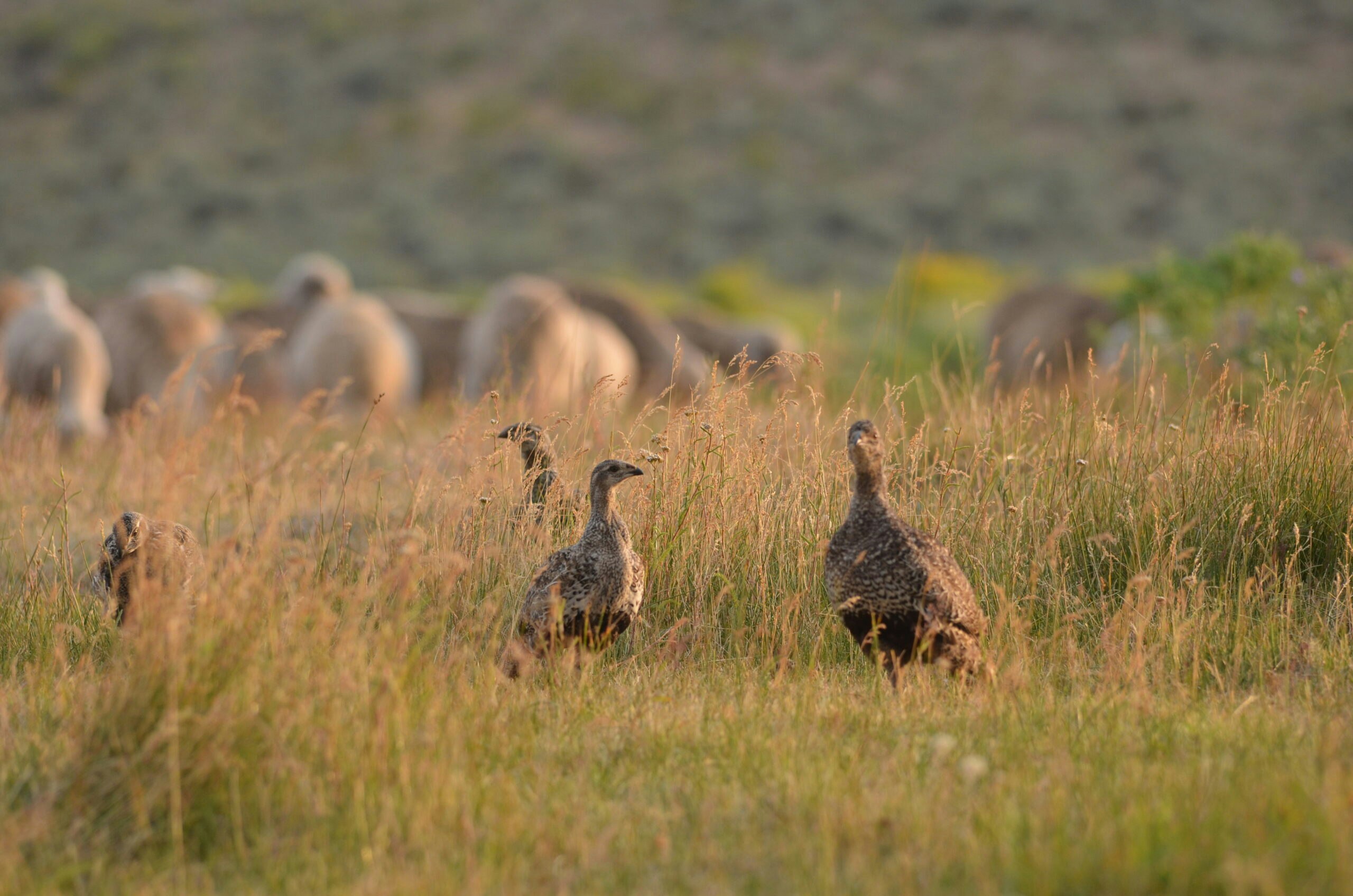The natural world on the ranch provides for daily wonders. Each spring we watch the pronghorn antelope fawns speeding past with their mothers, and get “barked” at by the bucks. We relish the bugling trills of sandhill cranes calling across the landscape in the dawn hours, and admire their gangly grace. But much of nature’s wonders at this time of year occur below knee-level to a human.
Last week my son Cass reported that there were thousands of fat tadpoles sprouting back legs in our grassy irrigation ditch, so we took turns going over to have a look at them before they completed their metamorphosis to frogdom.
When Maggie dipped her toes in the water, the tadpoles came over to inspect her feet, and soon a tiger salamander made an appearance as well. Salamanders prey on tadpoles, so it was terrific to watch both predator and prey in their shared aquatic habitat, especially since there is much concern about declining amphibian populations worldwide. Since I know next-to-nothing about Wyoming’s amphibians, I then sought out our go-to site for such knowledge in the state: The Wyoming Naturalist (wyomingnaturalist.com), which is operated by Dan Lewis out of Douglas and is highly recommended.
In the early mornings while I drive out to check the sheep and feed the livestock guardian dogs, I encounter broods of sage grouse feasting on insects in the irrigated meadows. When the sun gets too high, the grouse will fade back into the nearby sagebrush habitat to escape the heat.
Skirting around ant mounds, as we walk through the sagebrush and into the meadows we kick up multitudes of small grasshoppers and crickets, and are pleased to see both the diversity and density of insect life. Why would we be pleased by having so many insects? A thriving insect population can be a sign of ecosystem health. Importantly, certain insects provide the path to survival for sage grouse chicks, especially orthoptera (grasshoppers, crickets, etc.) and coleoptera (beetles) and hymenopterans (wasps, bees, ants, etc.).
Newly published research in the journal Environmental Entomology links the importance of these ground-dwelling arthropods with persistence of birds like sage grouse, and details the role of livestock grazing. Montana State University and University of Montana researchers compared arthropod populations in land that had been retired from livestock grazing for more than a decade to land subject to rest-rotational livestock grazing in Central Montana from 2012 to 2015. They found that bird-food arthropods were twice as prevalent in managed pastures as compared to idled lands. The idled pastures had at least double the number of predatory arthropods (such as spiders), including a fivefold increase in wolf spiders. These species are not considered to be a food source for grouse.
“In contrast, managed lands supported a more diverse assemblage of ground-dwelling arthropods which may be particularly beneficial for birds in these landscapes if, for example, diversity promotes temporal stability in this critical food source,” the researchers wrote. “Our results suggest that periodic disturbance may enhance arthropod diversity, and that birds may benefit from livestock grazing with periodic rest or deferment.”
Unfortunately, the Montana researchers didn’t find higher numbers of dung beetles on grazed land despite presumably greater dung beetle resources (livestock manure). The researchers suggested that the reduced dung beetle population may be associated with the use of veterinary parasiticides used on livestock, since parasite treatment residues may pass from the treated animal to the pasture through dung.
A walk through our rangeland pastures reveal that most piles of cattle dung (cowpies) have been flipped over by birds as they seek out dung beetles. These beetles are an important part of our environment that we strive to keep in good health, which in turn helps to keep the grouse population in good standing. Dung beetles provide an additional service to livestock by reducing intestinal parasite survival in pastures in arid climates. As one researcher put it, “If dung-beetle populations are allowed to thrive and recover, they can help naturally control the parasites farmers are treating.”
The next time you take a rangeland walk, spend a little time looking at the environment found below the knee. You may be surprised by the treasures you find there.
Cat Urbigkit is an author and rancher who lives on the range in Sublette County, Wyoming. Her column, Range Writing, appears weekly in Cowboy State Daily.





